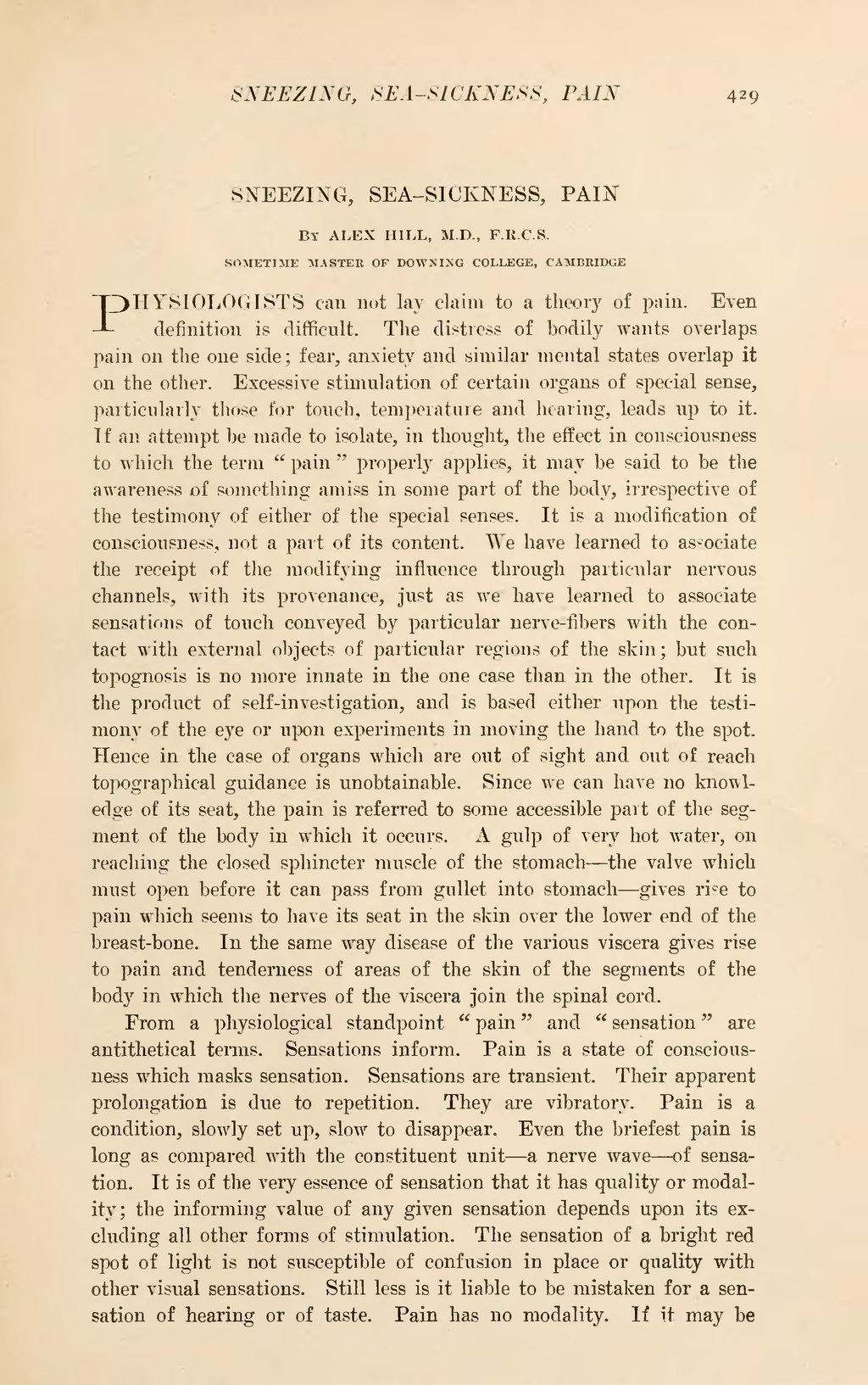| SNEEZING, SEA-SICKNESS, PAIN |
By ALEX HILL, M.D., F.R.C.S.
SOMETIME MASTER OF DOWNING COLLEGE, CAMBRIDGE
PHYSIOLOGISTS can not lay claim to a theory of pain. Even definition is difficult. The distress of bodily wants overlaps pain on the one side; fear, anxiety and similar mental states overlap it on the other. Excessive stimulation of certain organs of special sense, particularly those for touch, temperature and hearing, leads up to it. If an attempt be made to isolate, in thought, the effect in consciousness to which the term "pain" properly applies, it may be said to be the awareness of something amiss in some part of the body, irrespective of the testimony of either of the special senses. It is a modification of consciousness, not a part of its content. We have learned to associate the receipt of the modifying influence through particular nervous channels, with its provenance, just as we have learned to associate sensations of touch conveyed by particular nerve-fibers with the contact with external objects of particular regions of the skin; but such topognosis is no more innate in the one case than in the other. It is the product of self-investigation, and is based either upon the testimony of the eye or upon experiments in moving the hand to the spot. Hence in the case of organs which are out of sight and out of reach topographical guidance is unobtainable. Since we can have no knowledge of its seat, the pain is referred to some accessible part of the segment of the body in which it occurs. A gulp of very hot water, on reaching the closed sphincter muscle of the stomach—the valve which must open before it can pass from gullet into stomach—gives rise to pain which seems to have its seat in the skin over the lower end of the breast-bone. In the same way disease of the various viscera gives rise to pain and tenderness of areas of the skin of the segments of the body in which the nerves of the viscera join the spinal cord.
From a physiological standpoint "pain" and "sensation" are antithetical terms. Sensations inform. Pain is a state of consciousness which masks sensation. Sensations are transient. Their apparent prolongation is due to repetition. They are vibratory. Pain is a condition, slowly set up, slow to disappear. Even the briefest pain is long as compared with the constituent unit—a nerve wave—of sensation. It is of the very essence of sensation that it has quality or modality; the informing value of any given sensation depends upon its excluding all other forms of stimulation. The sensation of a bright red spot of light is not susceptible of confusion in place or quality with other visual sensations. Still less is it liable to be mistaken for a sensation of hearing or of taste. Pain has no modality. If it may be
